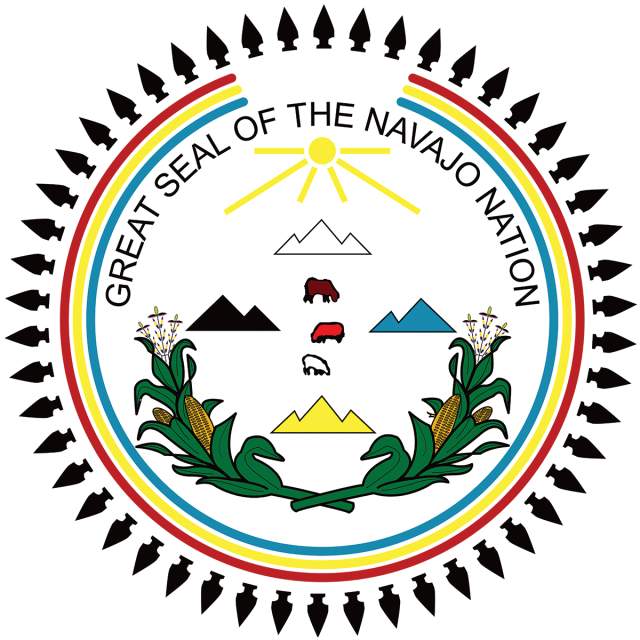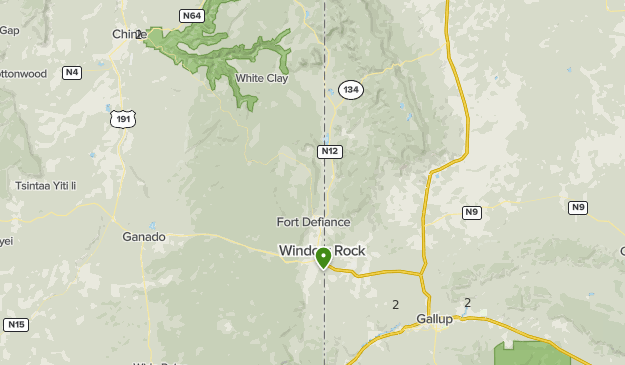
Where Earth Meets Sky: A Hiker’s Guide to the Navajo Nation Trails of New Mexico
The wind whispers stories across the vast, ancient landscapes of the Navajo Nation, carrying the scent of sagebrush and the echoes of time. For the adventurous spirit, these lands, particularly the less-traveled expanses within New Mexico, offer an unparalleled hiking experience – a journey not just through breathtaking geology, but into the very heart of Diné (Navajo) culture and spirituality. This isn’t just about conquering peaks or logging miles; it’s about walking in beauty, hózhóogo naasháa doo, and connecting with a land that breathes history and reverence.
Spanning over 27,000 square miles across Arizona, Utah, and New Mexico, the Navajo Nation is the largest land area retained by an Indigenous people in the United States. Its New Mexico portion, though often overshadowed by its Arizona counterparts, is a tapestry of high desert, dramatic mesas, deep canyons, and sacred mountains, each inviting respectful exploration. Unlike national parks with clearly marked trails and visitor centers, hiking here often requires a deeper commitment: securing permits from Navajo Nation Parks & Recreation or specific local chapters, understanding the land’s sacred nature, and often, a spirit of self-reliance and discovery.
The Icon of the Horizon: Shiprock Peak (Tsé Bitʼaʼí)
Perhaps no single landmark embodies the majestic power of the Navajo Nation in New Mexico more profoundly than Shiprock Peak, or Tsé Bitʼaʼí – "rock with wings." This monumental volcanic neck, rising over 1,500 feet from the high desert plain, is visible for miles, a stoic sentinel against the azure sky. For the Diné, Tsé Bitʼaʼí is a sacred site, central to many of their origin stories and traditions. Its summit is strictly off-limits to climbers and hikers out of reverence and for safety reasons, but the surrounding landscape offers incredible opportunities for respectful exploration.
Hiking around the base of Shiprock, or along the washes and arroyos that radiate from it, provides an intimate perspective of its grandeur. The flat, open terrain allows for expansive views, with the peak dominating every vista. Photographers flock here, especially during sunrise and sunset, when the light paints the ancient rock in hues of fiery orange and deep purple. While not a formally designated trail system, the act of walking the land around Tsé Bitʼaʼí is a powerful experience. You’ll feel the immense scale of the earth, the silence broken only by the wind, and an undeniable sense of the sacred. It’s a place to reflect, to observe, and to simply be. Remember, this is sacred ground; tread lightly, leave no trace, and always admire from a respectful distance.

Ancient Footprints: Exploring Chaco Culture National Historical Park
While managed by the National Park Service, Chaco Culture National Historical Park sits firmly within the historical and cultural sphere of the Navajo Nation, deeply intertwined with the landscape and often accessed via surrounding Navajo communities in New Mexico. This UNESCO World Heritage Site offers some of the most profound hiking experiences in the region, leading visitors through the remnants of a sophisticated Ancestral Puebloan civilization that flourished over a thousand years ago.
Chaco Canyon itself is a vast, arid basin, but the trails here are remarkably well-preserved and lead to monumental great houses, kivas, and ancient roadways.
- Pueblo Alto Trail: This challenging 3-mile loop offers a significant ascent to the mesa top, rewarding hikers with panoramic views of the entire Chacoan complex, including Pueblo Bonito and Chetro Ketl. Walking this trail, you gain a sense of the sheer scale of the ancient civilization and their connection to the celestial alignments. The trail passes several smaller ruins, offering glimpses into the daily lives of Chaco’s inhabitants.
- Wijiji Trail: A relatively easy 3-mile round trip, this trail leads to the remote Wijiji great house, nestled against a sheer canyon wall. The walk is flat and passes through classic Chacoan desert scrub, offering a quiet, contemplative journey to a less-visited, yet equally impressive, ruin.
- Kin Kletso and Pueblo del Arroyo Loop: These shorter trails (0.6 and 0.5 miles respectively) offer accessible walks around impressive structures, providing context for the larger Chacoan world. They are perfect for those seeking a more leisurely exploration of the park’s core.
Hiking in Chaco is a journey through time. The meticulously crafted stonework, the precise astronomical alignments, and the sheer effort involved in building such a civilization in this arid environment are awe-inspiring. It’s a powerful reminder of human ingenuity and resilience, and of the deep spiritual connection the Ancestral Puebloans had with this land, a connection echoed by the Diné today.

High Desert Peaks: The Chuska Mountains and Narbona Pass
Venturing further west into the New Mexico portion of the Navajo Nation, the landscape transforms. The Chuska Mountains, running north-south along the Arizona-New Mexico border, offer a stark contrast to the desert plains. Here, at higher elevations, pine forests dominate, providing cooler temperatures and a different kind of hiking experience. Narbona Pass (also known as Washington Pass), a historically significant route through the Chuskas, is a prime example.
While formal, maintained trails might be sparse, the Chuska Mountains offer immense opportunities for exploratory hiking. Local roads and dirt tracks often lead to breathtaking viewpoints, and with proper permission from the local chapter, you can explore the forested slopes and hidden canyons. The air is crisp, the scent of pine is strong, and the views stretch for miles across the vast Navajo landscape. This is a place for those who enjoy forging their own path, armed with maps, a compass, and a healthy respect for the wilderness. The geological diversity, from volcanic formations to sedimentary layers, tells a story millions of years in the making.
Riverine Exploration: The San Juan River
In the northern reaches of the Navajo Nation in New Mexico, the mighty San Juan River carves its way through the landscape, offering a different kind of natural beauty. While known for fishing, the riverbanks and surrounding mesas provide opportunities for less formal, yet equally rewarding, hikes. Access points, often found near communities like Shiprock or Farmington (which borders the Nation), allow for exploration of the river’s riparian zones.
Walking along the San Juan, you’ll encounter cottonwood galleries, tamarisk thickets, and a rich array of birdlife. The river itself is a lifeblood in this arid region, creating an oasis of green amidst the desert hues. Venturing away from the river, up onto the adjacent mesas, offers commanding views of the water snaking through the land, and of the distant mountains. Again, these are often not marked trails but opportunities for self-guided exploration, emphasizing the need for respectful behavior and awareness of private and tribal lands.
The Essence of the Experience: Walking in Beauty
Hiking in the Navajo Nation of New Mexico is more than a physical activity; it’s a profound immersion. The silence here is often deafening, allowing the subtle sounds of nature – a hawk circling overhead, the rustle of dry grass, the whisper of the wind – to become prominent. The light is extraordinary, painting the mesas and canyons in an ever-changing palette of reds, oranges, and purples, especially during the golden hours.
"The land here speaks to you," says Sarah Begay, a Diné elder and weaver from near Shiprock. "Every rock, every plant has a story, a spirit. When you walk, you are not just a visitor; you are part of that story, if you open your heart." This sentiment underscores the core of respectful visitation. The Navajo Nation is not just a scenic backdrop; it is a living, breathing cultural landscape, where traditions are upheld, and the land is deeply revered.
Navigating with Respect and Preparedness
Before embarking on any hike within the Navajo Nation, several critical considerations are paramount:
- Permits: Always check with Navajo Nation Parks & Recreation (navajoparksandrec.org) or the specific local chapter (e.g., Shiprock Chapter, Crownpoint Chapter) for permit requirements. Many areas require a permit, and unauthorized access can lead to fines or worse.
- Respect Sacred Sites: Many areas, like Shiprock Peak, are sacred and have restrictions. Always adhere to posted signs and local guidance.
- Leave No Trace: Pack out everything you pack in. Stay on existing paths where possible, and do not disturb cultural artifacts or natural features.
- Safety: The high desert environment can be unforgiving. Carry ample water (more than you think you’ll need), wear sun protection (hat, sunscreen), and sturdy hiking shoes. Be aware of changing weather conditions, which can include sudden thunderstorms or extreme heat. Cell service is often nonexistent in remote areas; tell someone your plans and expected return time.
- Wildlife: Be aware of local wildlife, including snakes, scorpions, and coyotes.
Hiking the Navajo Nation trails of New Mexico is an extraordinary privilege. It’s an invitation to step away from the clamor of the modern world and into a timeless realm where the earth’s raw beauty and a rich cultural heritage intertwine. From the iconic silhouette of Shiprock to the ancient whispers of Chaco Canyon and the forested slopes of the Chuska Mountains, these trails offer not just a physical challenge, but a spiritual journey, leaving an indelible mark on the soul of every responsible adventurer. Walk with purpose, walk with respect, and walk in beauty.


